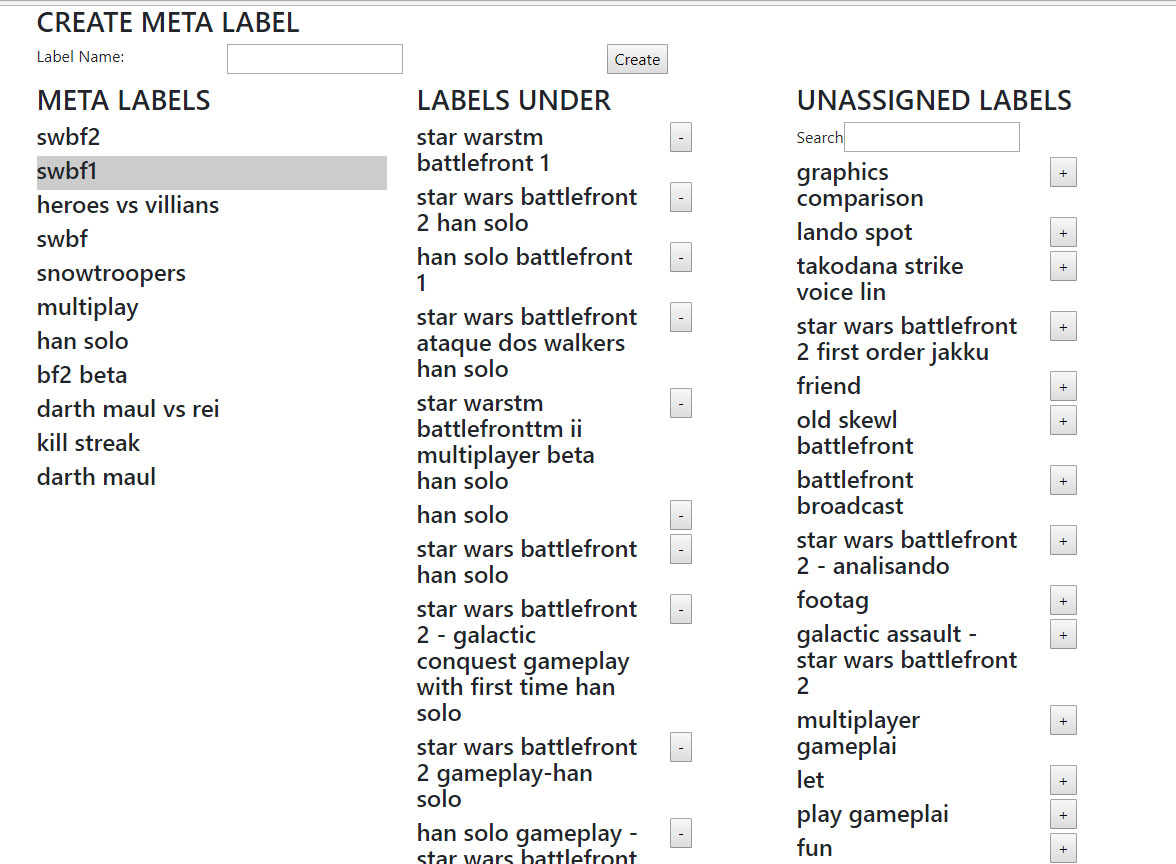Halves Feedback
A lot of feedback was given to us for Halves. A lot of them is directed towards the usefulness of the product. Users who attended our showcase wanted to see more information with regards to the videos and see more information with regards to the axes on the prototype, such as view count and a zoomable time bar. We also received feedback to be more creative in terms of our visualization, and also ensure that our product is highly functional and usable by our target users – community managers. Currently, it is a huge challenge for us to have a product be highly innovative in terms of visuals without compromising certain functionalities.
This week, we progressed well on several fronts.
Meta-labels
The meta-label feature is designed to categorize collected terms that have the same semantic meaning in the game’s context. For example, “SWBF” has the same meaning as “Star Wars Battlefront” and thus will be categorized under the same meta-label “SWBF”. The stemming process (mentioned one of our previous posts) automatically categorizes English words, and the meta-label is done after stemming to categorize game specific terms with the same meaning together.

Youtube statistics
In preparation for grouping videos according to different criteria, we also looked into parsing Youtube statistics to obtain information such as like counts and view counts.

Twitter mentions
We also implemented twitter parsing to update the latest mentions (One of our Y-axis criteria) of Youtube videos. This gives us more community information on the latest relevant videos despite its upload date.
Front-end
On the front-end, we have spent time migrating it to React to facilitate future developments.
UI
Perhaps our most challenging hurdle to overcome. We have explored and iterated our UI numerously according to feedback. This current UI is our take on the balance between functionality and creativity.


Right now, we’re processing feedback for this interface based on instructors and nailing down components to playtest next week.